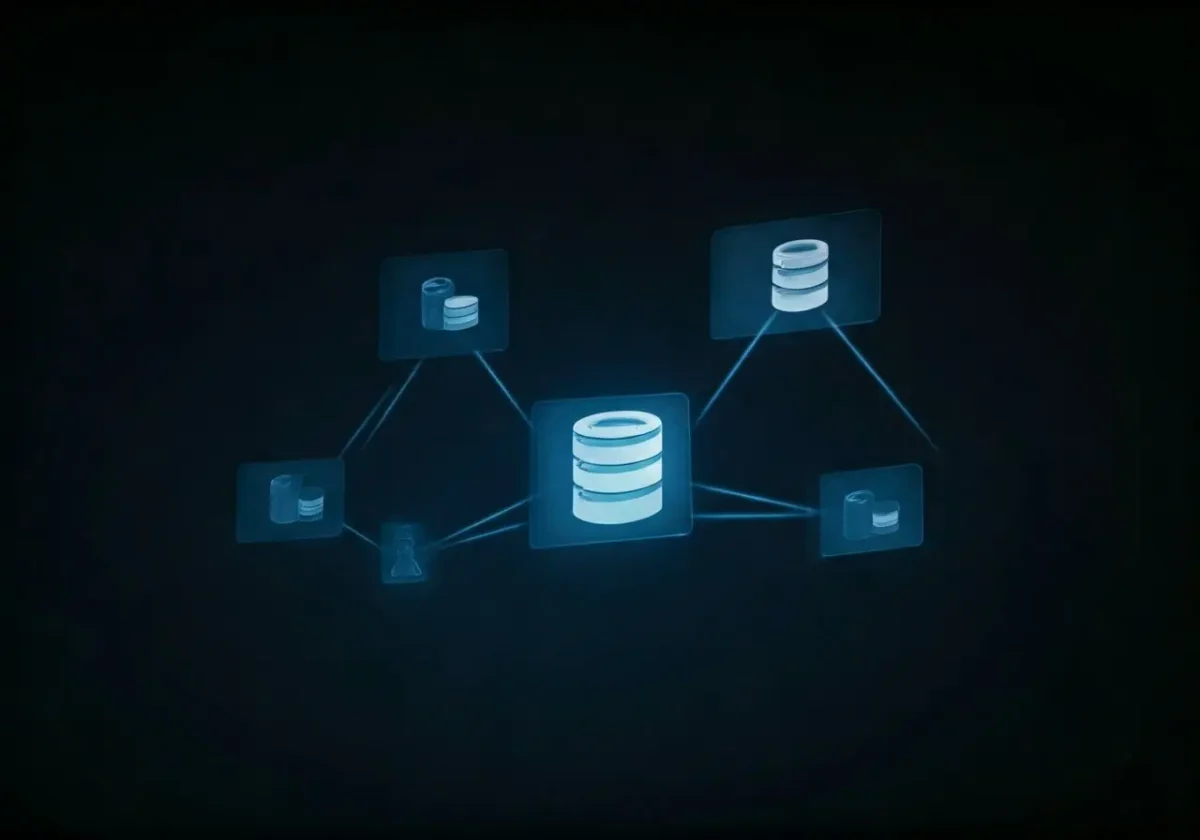In today’s fast-paced world, effective data collaboration is more important than ever. By working together, teams can leverage data to enhance productivity, streamline operations, and achieve better results. In this blog, we’ll explore the numerous benefits of data collaboration and how it can positively impact your workflow.

What is Data Collaboration?
Data collaboration involves the process of sharing, combining, and analyzing data across different teams and departments. It allows organizations to harness the collective knowledge and expertise of their team members to achieve better results.
Think of data collaboration as a symphony orchestra where each musician plays a different instrument, yet they work together to create a harmonious performance. By fostering data collaboration, teams can access a more complete and accurate set of information, leading to well-informed decisions and efficient problem-solving. It’s about breaking down silos and promoting an open exchange of information that drives innovation and boosts productivity.
Data collaboration goes beyond simply sharing information; it’s about actively working together to analyze and interpret data. This collaborative approach ensures that everyone is on the same page, reducing miscommunications and errors. By leveraging various perspectives and expertise, teams can identify trends, uncover insights, and develop creative solutions to complex problems.
Key Benefits of Effective Data Collaboration
Effective data collaboration brings numerous benefits to an organization. It improves decision-making, boosts productivity, fosters innovation, and enhances data security. By breaking down silos, teams can work together more efficiently and make more informed decisions.
In addition to these benefits, data collaboration enhances organizational agility. When teams can quickly share and analyze data, they can respond swiftly to market changes, customer needs, and emerging trends. This adaptability is crucial in today’s dynamic business environment. Moreover, data collaboration enables the pooling of resources, allowing for more comprehensive and enriched data sets that drive better outcomes.
Another key benefit is the enhancement of team relationships and culture. When individuals collaborate on data-driven projects, they build trust and rapport, leading to a more cohesive and motivated workforce. This positive team dynamic can significantly impact employee satisfaction and retention, fostering a collaborative culture that values continuous learning and innovation.
Lastly, data collaboration can lead to cost savings. By eliminating redundant processes and streamlining workflows, organizations can reduce waste and allocate resources more efficiently. This optimization not only improves operational efficiency but also contributes to higher profitability and a stronger competitive advantage.
Improving Decision-Making
When data is shared and analyzed collaboratively, decision-makers have access to a more comprehensive set of information. This leads to more accurate and insightful decisions that can drive the success of the organization.
For instance, data collaboration allows for a diverse array of viewpoints and interpretations, ensuring that decisions are well-rounded and thoroughly vetted. By relying on collective intelligence, organizations can minimize biases and errors that often accompany individual analysis. Moreover, having access to real-time data enables leaders to make quick, informed decisions that can be pivotal in critical situations.
Data-driven decision-making also improves accountability within teams. When everyone has access to the same data and insights, it creates a transparent environment where decisions can be tracked and evaluated. This fosters a culture of responsibility and continuous improvement, as teams can identify areas for enhancement and learn from past experiences.
To further enhance decision-making capabilities, organizations can implement advanced analytics tools that facilitate collaborative analysis. These tools can identify patterns, correlations, and anomalies in data, providing valuable insights that human analysis might miss. By integrating these tools into the data collaboration process, organizations can unlock even greater potential for informed, strategic decision-making.
Boosting Productivity
Collaborative data efforts streamline workflows by reducing redundancy and ensuring everyone is on the same page. This boost in productivity allows teams to focus on core tasks without being bogged down by data discrepancies or miscommunications.
Imagine a scenario in a marketing department where team members are working on a campaign. By sharing data in real-time, team members can avoid duplicating work and efficiently allocate tasks based on insights and analytics. This streamlined workflow not only accelerates project timelines but also enhances the overall quality of the work produced.
Data collaboration tools, such as online Excel sharing, further amplify productivity by allowing team members to work on the same document simultaneously, regardless of their location. This feature eliminates the back-and-forth emails and file versions that can slow down projects, ensuring that everyone is working with the most up-to-date information. Additionally, features like automated version history and access control enhance efficiency and security, keeping projects on track and data safe.
By integrating data from various departments, organizations can create a unified view of their operations, identifying inefficiencies and opportunities for improvement. This holistic approach to data management enables teams to optimize processes, reduce bottlenecks, and allocate resources more effectively. In turn, this leads to higher productivity and better overall performance.
Fostering Innovation
When teams collaborate on data, they can uncover new insights and opportunities for innovation. This collaborative approach encourages creativity and the development of new solutions to complex problems.
Innovation thrives in an environment where diverse perspectives are valued and ideas can be freely exchanged. Data collaboration provides the perfect platform for this exchange, as team members from different disciplines can contribute their unique insights and expertise. By analyzing data collectively, teams can identify trends and patterns that might not be apparent to individuals working in isolation.
For example, a product development team can use collaborative data analysis to identify customer preferences and pain points, leading to the creation of innovative products that meet market demand. Similarly, a healthcare organization can leverage data collaboration to develop new treatment protocols and improve patient outcomes. In both cases, the collaborative approach to data fosters a culture of continuous improvement and innovation.
Moreover, data collaboration tools often come with features that support real-time data sharing and analysis, further enhancing the innovation process. By enabling instantaneous feedback and iteration, these tools allow teams to rapidly test and refine their ideas, leading to faster and more effective innovation cycles.
Enhancing Data Security
Effective data collaboration also involves the implementation of robust security measures. By ensuring that data is shared and accessed responsibly, organizations can protect sensitive information and maintain compliance with regulatory requirements.
Data security is a critical aspect of data collaboration, especially in an era where cyber threats are increasingly sophisticated. Collaborative tools that include features such as encryption, multi-factor authentication, and access controls are essential in safeguarding data. These tools ensure that only authorized individuals can access sensitive information, reducing the risk of data breaches and unauthorized access.
For instance, secure data management tools provide a fortified platform for data sharing. These tools implement encryption protocols that protect data in transit and at rest, making it extremely difficult for malicious actors to intercept or tamper with the information. Additionally, access controls allow organizations to define specific permissions for different users, ensuring that sensitive data is only accessible to those who need it.
Regular audits and monitoring are also vital components of enhancing data security in a collaborative environment. By keeping track of data access and modifications, organizations can quickly identify and respond to any suspicious activities. This proactive approach to data security not only protects against potential breaches but also fosters a culture of accountability and trust within the organization.
Implementing Data Collaboration in Your Organization
Integrating data collaboration into your organization involves adopting the right tools, fostering a collaborative culture, and providing ongoing training and support. By doing so, you can ensure that your team is well-equipped to leverage data collaboratively and achieve better results.
The first step to implementing data collaboration is selecting the appropriate tools that fit your organization’s needs. Look for tools that offer features such as real-time data sharing, advanced analytics, and robust security measures. Online Excel sharing tools are a great starting point, as they are user-friendly and facilitate seamless collaboration across teams.
Fostering a collaborative culture is equally important. Encourage open communication and the sharing of data and insights among team members. Highlight the benefits of data collaboration, such as improved decision-making and innovation, to motivate your team to embrace these practices. Leadership should also lead by example, demonstrating a commitment to data-driven collaboration in their decision-making processes.
Providing ongoing training and support is crucial to ensure that all team members are proficient in using data collaboration tools. Offer workshops and resources that cover the basics of data analysis, as well as advanced techniques for maximizing the potential of these tools. Continuous learning opportunities will keep your team engaged and up-to-date with the latest advancements in data collaboration.
Lastly, regularly evaluate your data collaboration efforts and make necessary adjustments. Solicit feedback from team members to identify any challenges or areas for improvement. By continuously refining your data collaboration strategy, you can ensure that your organization remains agile, innovative, and competitive in the ever-evolving business landscape.
The Power of Data Collaboration
In conclusion, effective data collaboration can greatly enhance your workflow, driving productivity, improving decision-making, fostering innovation, and ensuring better data security. Integrating these practices into your organizational strategy will not only streamline operations but also promote a collaborative and efficient working environment.





